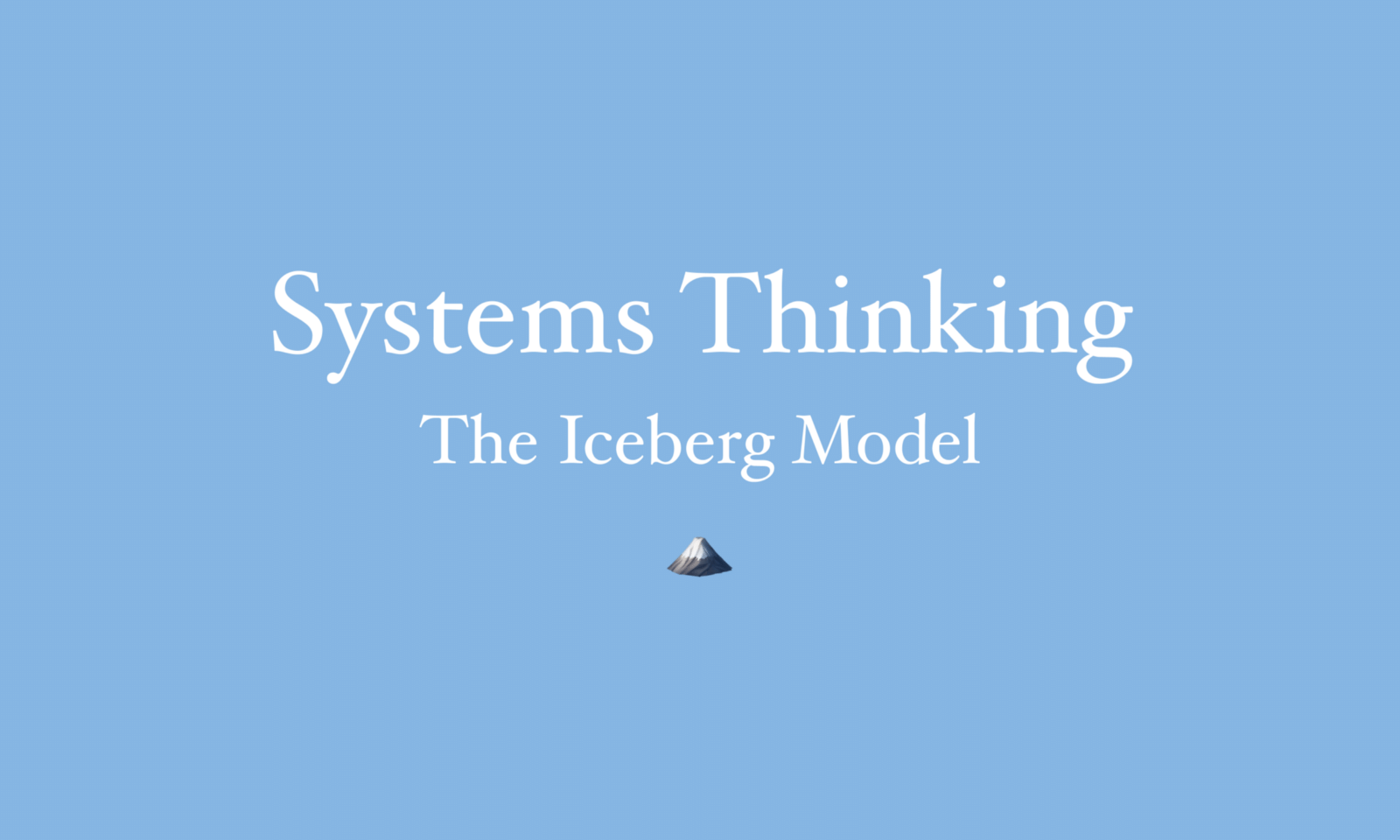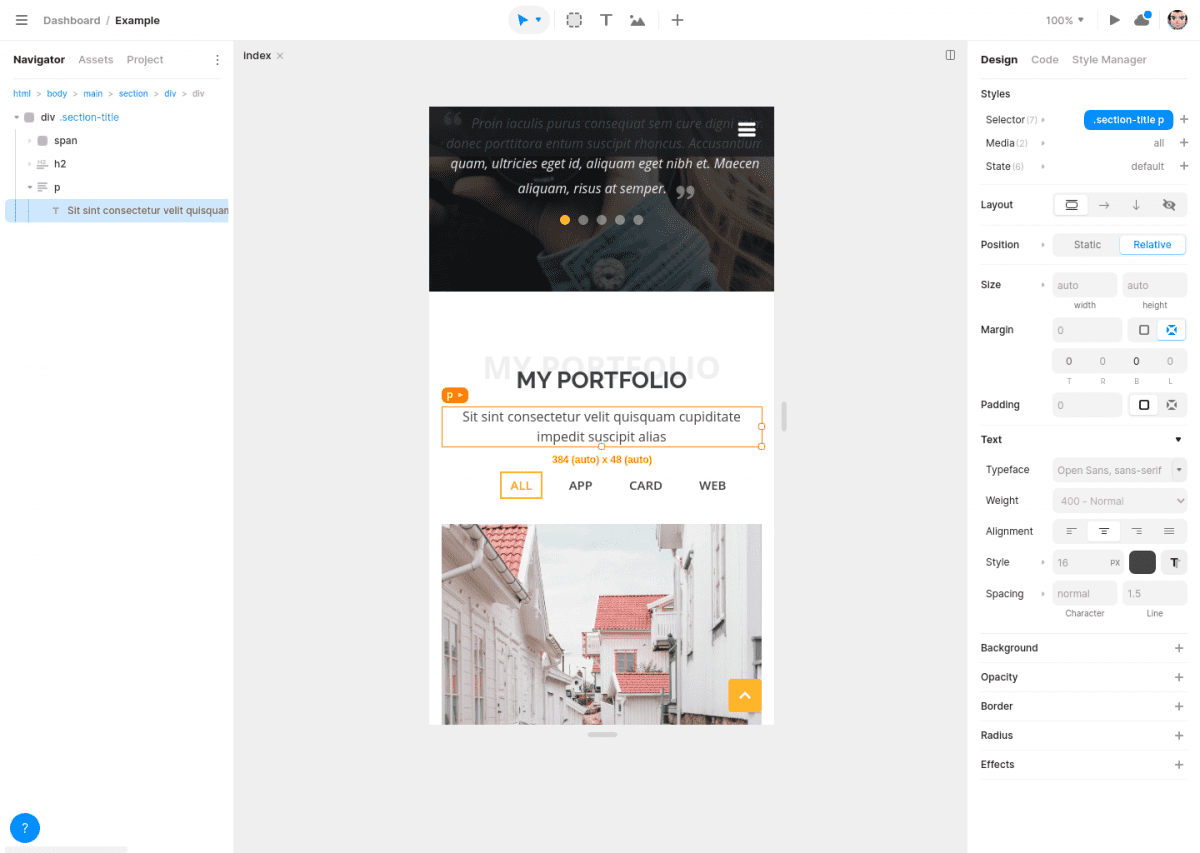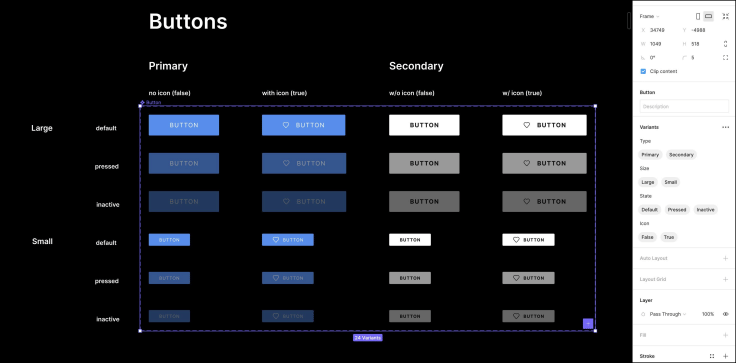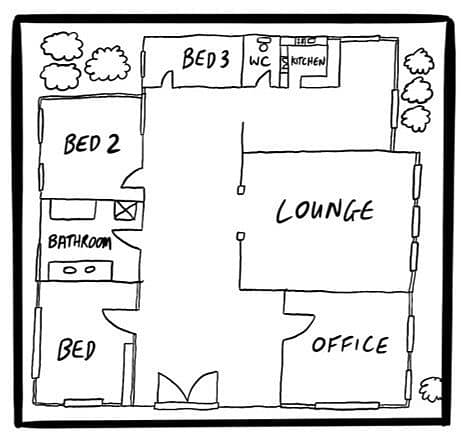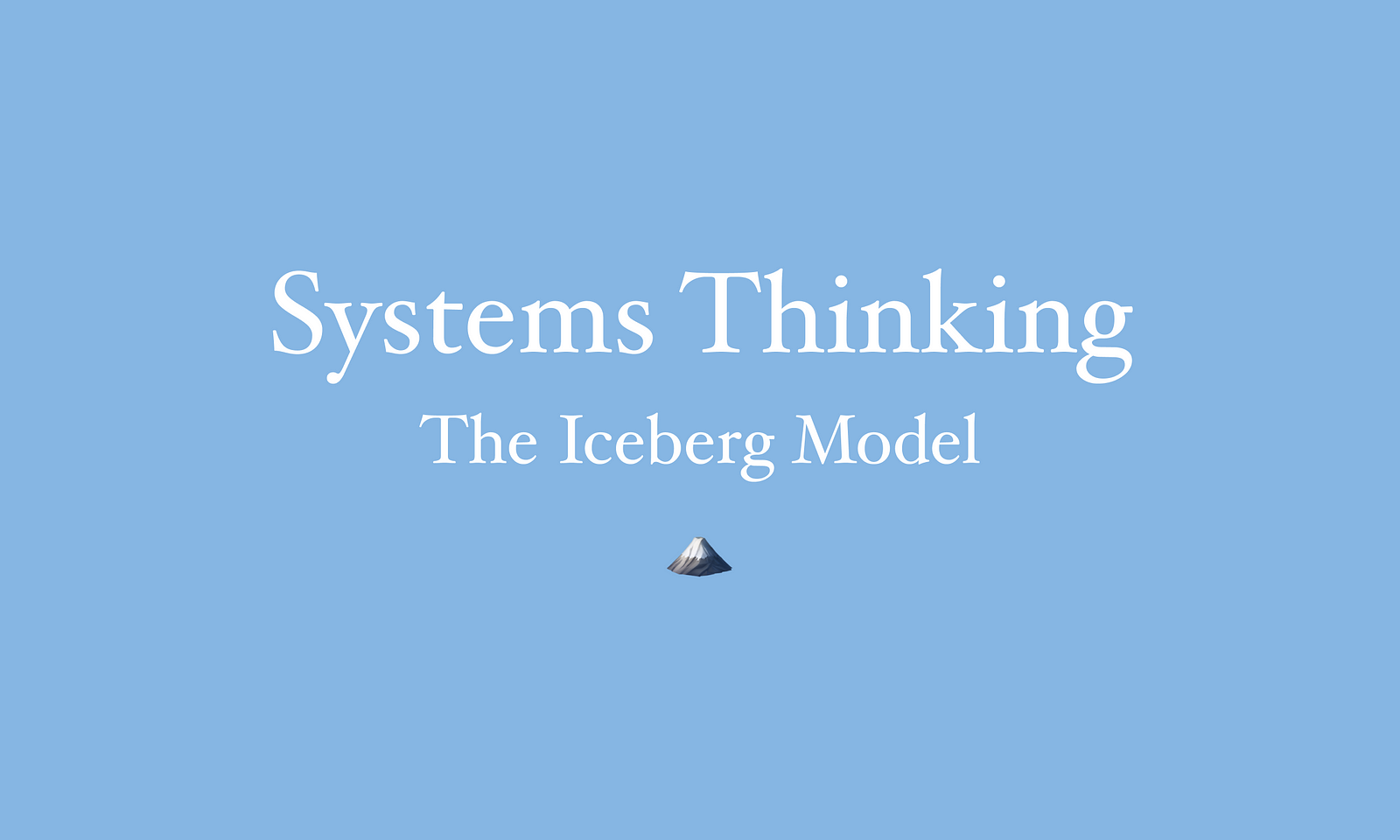
As designers our approach to solving problems matters as much as the problem is solved, a lot of the time we tend to approach these problems based on what we can see visibly for example if we eat too much without proper exercise we will gain weight, the solution when looking solely at the problem would be to eat less and workout more. This is a wrong approach, in systems thinking we tend to ask more profound questions like “ Why am I eating so much and not exercising ?” trying to get to what the root cause of the problem is in the first place and finding solutions based on theses is why the iceberg model of systems thinking is so efficient.
Systems thinking is a way of approaching problems that asks how various elements within a system — which could be an ecosystem, an organization, or something more dispersed such as a supply chain — influence one another. Rather than reacting to individual problems that arise, a systems thinker will ask about relationships to other activities within the system, look for patterns over time, and seek root causes.

A popular model used in system thinking is the iceberg model, we know that a lot of what happens at the tip of the iceberg is caused by what the ocean current acts on underwater.
"The 90% of the iceberg that exists underwater is what creates the behavior seen by the 10% that exists above the surface." - Kishau Rogers, Bigthinking.io https://bigthinking.io/the-iceberg-model-for-problem-solving/
Why is the Iceberg system useful in systems thinking?
The Iceberg model of system thinking is not just about coming up with solutions. It is also about figuring out what created the problem. Systems in the sense that it can also relate to our everyday lives, and our interactions with people. Everything is linked to one giant system.
For example, if children are properly taken care of they grow up careless and afraid to explore ideas but won’t understand why that is.
What are the Four levels of the Iceberg model?
The iceberg model has four levels that deeply explain how we can find the systems and the worldviews that lead to the event in the first place.
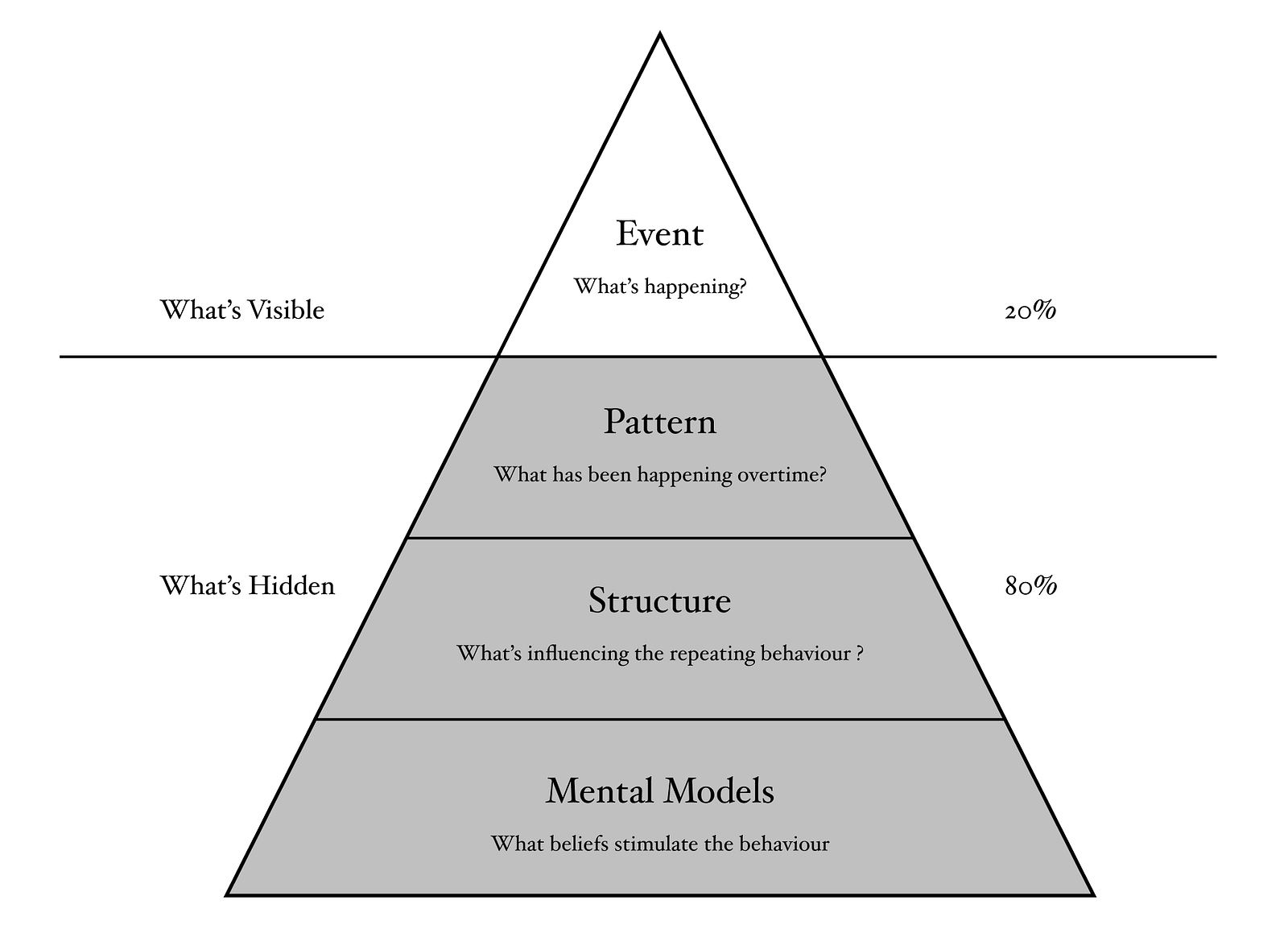
1. The Event Level
The event level is visible and it’s what we generally experience, such as when we discover we have a cold after waking up in the morning. The iceberg model encourages us not to believe that every problem can be resolved by merely treating the symptom or changing at the event level, even though problems detected at the event level are frequently treated with a simple readjustment.
2. The Pattern Level
When we look closely below events, we tend to notice patterns, and similar events that have been happening over time, we may catch colds anytime we move to a new environment, or if we don’t rest regularly. We can predict and avert events by looking for patterns.
If we better understand these patterns, we’re more able to prevent negative ones from getting stronger, even as we nudge positive ones towards reinforcing themselves.
3. The Structure Level
Further down the iceberg, we try to find out “what is causing these patterns?” Usually, the answer is some structure, the habit of eating poorly when under stress, or the inconvenient location of healthy food sources could all be structure at play in our catching a cold. According to Professor John Gerber, structures can include the
Physical things — like vending machines, roads, traffic lights, or terrain.
Organizations — like corporations, governments, and schools.
Policies — like laws, regulations, and tax structures.
Ritual—habitual behaviors are so ingrained that they are not conscious.
Developing a habit of asking what underlying structures in society might be generating which patterns of behavior are a high-leverage skill that will improve a designer’s ability to contribute to social innovation.
4. The Mental Model Level
The attitudes, convictions, morals, expectations, and values that support the continued operation of structures are known as mental models. These are the ideas that we unconsciously pick up from society or our families and are probably unaware of. Mental models like the idea that our identity is fundamentally shaped by our profession, the idea that eating healthily is expensive, or the idea that taking a break is only for lazy people could all play a role in why we develop colds.
The most challenging layer to change in the iceberg model is a layer that drives all of the conditions above it. They’re so powerful because we act on them without recognizing their influence. These mental models are so ingrained that it takes more than just working on our habits, they drive unconscious choices and assumptions we make every day. They’re both the hardest things to change in the system and the most important thing to change.

Letter
How can we use the Iceberg model to our advantage?
Now that we know what the Iceberg model is how then can we implement this in our problem-solving approach? We know that tackling the event is not an optimal solution, we need to start fixing things from the ground up by addressing our ingrained beliefs.
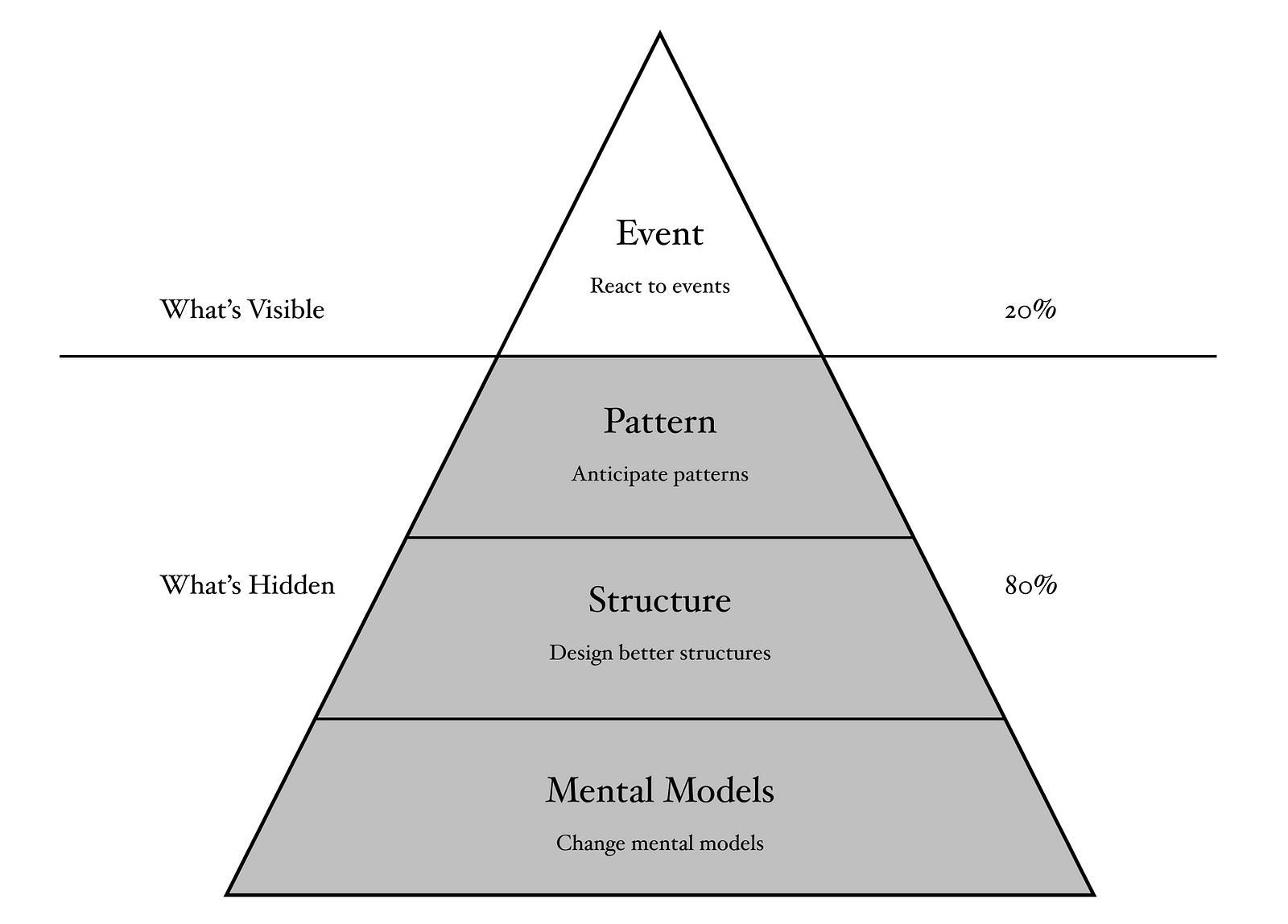
Change Mental Models
First, we need to understand why users do what they do, this could even mean thinking deep down about their childhood experiences what products they prefer over others and what superstitions or thoughts that might have shaped what we believe in today and how we react to events. Transforming this chain of thought is the first step.
Design Better Structures
There are a lot of things that reinforce these behaviors that we would need to address. Physically users might be used to a type of structure that works and so changing to something entirely different might be tough especially when there’s a large learning curve.
Also, the policy might affect how and what products can be used in a certain area especially if they require a physical presence to function properly.
Habits and certain rituals might not allow users to change preferences or even engage in a product at all, and certain unwritten rules of designs might cause a product to receive terrible feedback even though it is solving the problem required
A way to design better structures is to cut down on assumptions and carry out research and also put systems in place to constantly allow for feedback.
Anticipate Patterns
The more you can understand what might cause user problems the more you can anticipate and come up with proper solutions to these things, this is why putting structures in place that encourage feedback and tests are very important, carrying out proper research and analysis gives a better understanding of the problem, users and product you don't want to keep solving a problem blindly without any previous knowledge.
Most times a lot of companies try to cut costs in areas related to research, it is up to you to convince them about how this could be beneficial to them. A way to do this is by involving stakeholders early and having them participate in some of the processes as well, this builds interest as to what they have to gain, also as much as possible explain preferably with numbers how your process can cut down cost and increase returns.
React to Event
Once we know what triggers certain patterns and inner desires for users to do things, we can better react to the actual event. The thing that is causing problems, and come up with a viable solution. Rather than acting on our first instinct, or basing solutions on assumptions. If we keep doing this, we would realize that we are realizing products to non-existent problems.
Questions to consider when using the Iceberg model
Does the iceberg model enable you to see things more broadly? If so, how would this fresh viewpoint be beneficial?
Think about the idea of “leverage” points for entry. These are the moments in a system where intervention could result in systemic change. Does the new entry point the exercise reveals encourage you to take action?
What problems have you encountered that the Iceberg Model would be useful for analyzing?
In Conclusion
The Iceberg model of systems thinking can be applied to all aspects of solving problems if you can imagine everything below the event as an independent system. The transformation lies in the thinking that created the structure, that drove the pattern, that caused the event.
Avoid simply reading the text without performing any research. Use the framework in your projects. Even if you believe you have the situation under control, asking yourself these questions and considering the various scenarios will help you become more prepared for unexpected complications.
We can learn to pinpoint the underlying causes of the issues we face — the systems that underlie the behavior — when we train ourselves to look beyond the obvious. As a result, improve your problem-solving skills and, more crucially, develop solutions based on inner desires or strive to embrace empowering mental models.
Don’t forget to leave a clap you can also reach out to me on Twitter, or Linkedin if you would love to know more about systems thinking.
